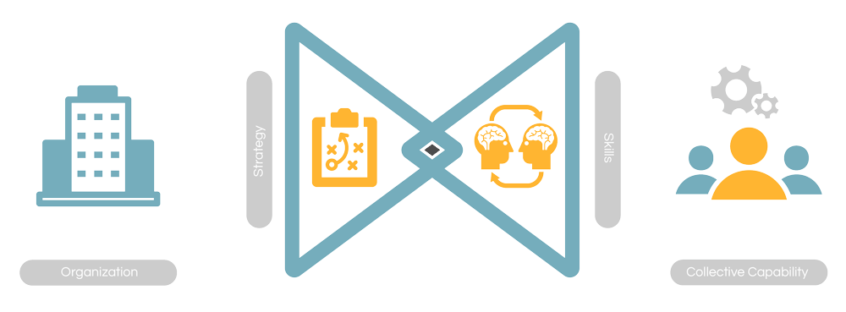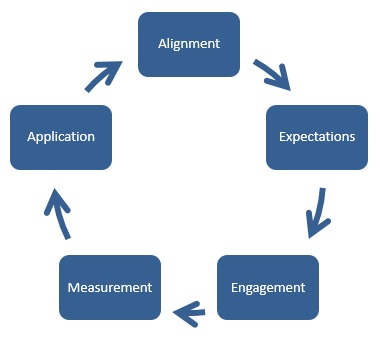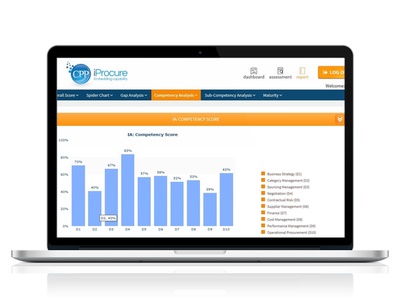How to make Procurement e-Learning deliver strategic business results
We discuss how to make Procurement e-Learning deliver strategic business results as part of your training programs. e-Learning addresses today’s critical business drivers – it’s green, it’s scaleable, it’s sustainable, it saves money, it’s mobile, and most importantly—it works.
1. Introduction
The advantages of e-learning are so apparent that all companies will adopt e-learning in future:
1.1 Strategic Role
CPO’s and Procurement Centres of Excellence (CoE’s) can implement a business strategy that maximizes the synergies between continuous learning and employee productivity. Such an approach requires appropriate technical support to be effective, and e-learning can provide the answers with excellent results in a short time-frame.
1.2 Speed of Delivery
The faster speed of delivery and comparatively lower cost of e-learning programs make them very attractive. As we reported in a previous post, e-learning has a quicker delivery cycle (velocity) times than traditional classroom-based instruction. Christian Terwiesch (2014), professor of operations and information management at Wharton, said there is a compression of 50% as you go from the conventional classroom to online media.
1.3 Learning Outcomes
Studies have shown that e-Learning can have a stronger impact on learning outcomes than traditional instructor-led training and an even higher learning impact when combined with traditional instructor-led training.
However, despite these critical benefits, companies should invest in e-Learning with a clear understanding of what it takes, beyond the technology and content, to make e-Learning programs deliver business results. Otherwise, it is likely to fail and a healthy return on investment, lost.
2. Prepare for success
Failure is not usually a result of the technology or the learning program itself, but organizational factors.
Our framework (Fig 1) explains the organizational factors that must be present for employees to convert e-Learning into business results:
- Aligning e-Learning programs with both the individuals and organizational goals;
- Expectations communicated for the e-learning program;
- Engagement and dialog between learners and their managers;
- Measurement & Evaluation of business results;
- Applying learning to achieving business goals.
The organizational factors listed are necessary to ensure that learning from the content will make a difference. Each element must be in place to support the learning activities:
- First, learners must have clear learning goals that align with business outcomes, and they must understand how the learning content will help them achieve business goals.
- Second, managers must set expectation; to understand the competencies required for success and, why these are important to the individual and the organization.
- Third, managers must engage learners to discuss what they must learn, opportunities to apply learning, and how they will know that the application has positively impacted business results.
- Fourth, managers, must measure learning outcomes, observe the impact of the learning program, and provide feedback to learners.
- Fifth, learners must use their learning; learning from the training must be applied very soon after successful completion.
2.1 Alignment
Training programs must have a visible value chain that connects employee learning to organizational performance outcomes.
Your team may find the e-learning engaging and easy to understand, but unless the e-Learning has a distinct relationship to business success, employees will not value the learning, and the initiative will falter. Alignment drives a higher level of motivation, more significant commitment to results, and a better understanding of what must be done to achieve success.
2.2 Expectations
Expectations are a significant factor in learning. Managers must make it clear to learners that the knowledge, skills, attitudes, and beliefs they are being asked to internalize are critical to their effectiveness in achieving the expected performance in their role.
In other words, learners must know:
- what they will learn from the program;
- why they will learn it;
- what they will do with that learning.
Learners should have high, but reasonable, expectations for how they will apply the learning in their role to achieve business results.
Participants who have a clear sense of the program benefits, and welcome the opportunity, are more likely to build the required capabilities to contribute to organizational success.
2.3 Engagement
Employees are much more likely to learn new knowledge, skills, attitudes, and behaviors if they believe that their managers care about and support the training.
Managers play an essential role in setting goals, clarifying expectations, motivating learners and providing them opportunities to apply learning on the job and to determine impact.
And executives play an essential role in motivating employees to learn by communicating that the organization values, the competencies learned.
Participants who get the most from development programs, (i.e., produce business results), are the same participants who report that they met with their managers before and after the program to discuss goals and outcomes.
These are the participants who feel supported, who believe that their participation in the program is important to the organization and that applying learning successfully afterward, will improve performance and will be recognized and rewarded.
2.4 Measurement & Evaluation
Means answering important questions:
- What was the result of the learning program?
- Did the learning support business goals and objectives?
- Was it effective?
- What needs to happen so that the learning continues to contribute to important business results?
These are the questions that cause managers and learners to reflect on the learning program. The answers tell them where they are and what interventions are necessary.
Merely asking participants questions about what they learned and how they are applying it can have a powerful effect:
- It can cause learners to think about their experience, and reflect.
- It can renew their commitment to improving performance that diminished under the pressures of daily work.
- It can provide a jump-start for action. Remembering the changes they had intended to make, and re-committing to making those changes.
2.5 Application
Learning outcomes are not an end in themselves but the basis of for eventual application. If the e-learning has done its job, then learners should have a clear view of:
- what they must be able to do;
- how they approach it in practice;
- how they apply it in their role;
- how will application positively impact business results?
It is both the managers and the participant’s job to seek out opportunities to apply their newfound capabilities as they conduct their work. Without this, knowledge will very quickly evaporate and the learning and potential benefits lost.
3. Maintaining Momentum
E-learning can suffer from the low utilization rates. But why is this?
Employees have many competing demands on their time, both at work and at home. So they must be motivated to give priority to the e-learning over these competing demands.
Press below to play Demo: Experiential e-Learning is engaging & easy to understand:
Maintaining the e-learning program on the participant’s radar over time requires that the learning program must include one or more of the following characteristics:
- Essential: if the training program is a compulsory part of my development activities at work, then I will indeed remain engaged. However, there should be other soft factors that motivate them to stay involved.
- Enjoyable: that it is engaging and easy to understand. So in those moments when they are deciding which of a range of competing demands to participate in, they will often choose the learning.
- Structured: if there is a clear, predetermined structure to learning programs, such as schedules and completion dates, then learners are predisposed to maintain the schedule.
- Social: people are social beings, and we all enjoy activities where we relate to other people. If we can provide opportunities for people to interact throughout their learning, then their motivation levels will increase.
- Supportive: learners need support from their managers. Managers can provide encouragement, motivation, opportunities for application, etc.
4. Conclusion
Your e-learning initiatives don’t need to fail.
E-Learning’s time has arrived. Its adoption into the toolset for building procurement capability is rapidly growing and has the potential to be a disruptive force in the procurement training sector.
However, as with traditional training delivery, great technology and content are not enough to ensure application of the learning occurs, to drive the business results that deliver a return on training investment. CPO’s and CoE’s need to manage and support the learning and application process.
One way to provide this support is to apply our framework and tools to manage learning interventions. The framework cannot guarantee that learning will occur or that they will use it to improve the business result. However, without the right tools and processes in place that enable application, it is unlikely to drive improved business results.
Nuff said ….
Learn more about our Procurement e-Learning programs.
You can learn more about iProcure here




